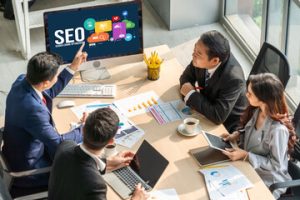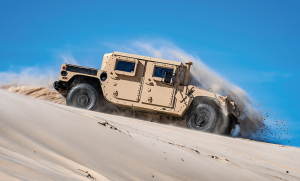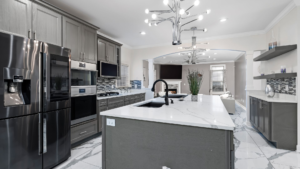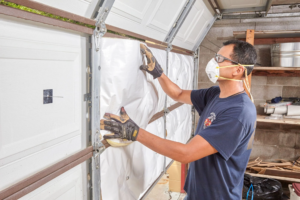Plumbing is the unsung hero of your home, running invisible behind walls and beneath floorboards to carry water and sewage to where it’s needed. Proper maintenance and occasional repairs keep it working its best.

Timely inspections and maintenance reduce costly breakdowns and extend the lifespan of pipes and fixtures. Contact Mckinney Plumbing Services for professional help.
Plumbing problems often arise from the unexpected, but routine inspections catch issues before they escalate. This minimizes the risk of expensive repairs and disruptions to business operations. It also prolongs the lifespan of pipes, fixtures, and appliances.
Residential plumbing services typically offer preventative maintenance to ensure that pipes, toilets, showers, sinks, and other appliances are working properly. This includes examining outside drains and the plumbing in basements and crawl spaces. In addition, these professionals can help with water heaters and other home appliances.
Commercial plumbing services focus on preventing problems before they occur in office buildings, restaurants, industrial plants, and other large structures that rely on plumbing to operate. Unscheduled plumbing failures can disrupt business operations and lead to lost revenue. Preventative maintenance reduces the risk of costly problems and improves overall system efficiency.
Leaks are one of the most common plumbing issues. Regularly inspecting and repairing leaky faucets, toilets, and other fixtures can prevent damage to floors, walls, and furnishings. It also helps reduce water waste and lower utility bills.
In some cases, a repair may be needed to fix an existing problem, such as old cast iron pipes or a clogged sewer line. In these cases, a plumber can conduct a video inspection and recommend the appropriate course of action. This may include lateral lining, trenchless pipe repair, or other innovative solutions.
Plumbing maintenance can also address issues like low water pressure that could indicate a burst pipe or another problem. This is usually an easy fix, but ignoring it can cause significant damage over time.
Many plumbing companies specialize in preventative maintenance, but it’s important to find a company with experience in your type of building. Look for a plumber with a portfolio of past work in your area, and read reviews to see what other customers have said about their experience. You should also ask about the business structure, as a sole proprietorship offers less liability protection than an LLC or corporation. Choosing the right structure can make it easier to keep records, invoices, and other paperwork organized.
Emergency Repairs
A well-functioning plumbing system is essential for your home, so if you notice any problems with it, it’s important to seek professional repair services as soon as possible. These services can range from unclogging drains to replacing a water heater, and they are typically available on an emergency basis. In addition to addressing urgent issues, plumbing services can also help you plan upgrades to your home’s plumbing, such as new faucets or a new bathroom layout.
Residential plumbing services cover all of the pipes and fixtures inside your home, including sinks, tubs, showers, toilets, and more. This includes both hot and cold water lines, as well as sewer pipes that connect to your septic system or garbage disposal. It’s important to have these services in place because a leaky pipe can cause significant damage in a short amount of time, while clogged toilets and drains can lead to flooding and serious health issues.
Professional plumbers are trained to diagnose and fix a wide range of plumbing problems, from minor fixes like dripping faucets to major repairs like burst pipes. In some cases, it may be necessary to replace entire sections of a plumbing system if it is damaged beyond repair. Regardless of the scope of the repair, a professional plumber will ensure that it is completed in a timely manner and at a fair price.
Leaky dripping faucets may seem insignificant, but over time they can waste gallons of water and increase your water bill significantly. In addition, if the problem is left unattended, it can lead to water damage and mold growth in your home. To avoid these problems, invest in regular maintenance and repair services from a qualified plumbing company.
A backed-up sewer line is one of the most stressful plumbing issues you can face, as it can lead to sewage backups and severe property damage. In most cases, the source of the issue is a broken sewer line or a blockage in your home’s main sewer line. If you’re experiencing a sewer backup, it’s important to call a plumber immediately to minimize the damage and avoid costly repairs in the future.
Commercial Plumbing
Commercial plumbing is distinct from residential plumbing in both scale and complexity. It involves the installation, maintenance, and repair of a wider range of plumbing systems designed to handle higher volumes of water and more rigorous environmental regulations. Commercial plumbing services are typically offered to businesses such as office buildings, shopping centers, and industrial facilities.
Like residential plumbing, commercial systems include a wide array of pipes, fixtures, and appliances. However, unlike residential plumbing systems, which serve 2-4 family members at a time, commercial plumbing systems must support the needs of multiple occupants over the course of a day and cope with greater usage demands. This is particularly true for large-scale properties such as office buildings or apartment complexes.
Because of the greater demand placed on plumbing systems in commercial settings, plumbing problems can quickly escalate and affect multiple occupants at once. These issues can range from simple drain clogs to major leaks and sewer backups, which can cause significant damage in short periods of time.
When choosing a plumbing service provider for your commercial property, it is important to consider their reputation, experience, and skill set. Look for a provider with a solid track record of reliable service and customer satisfaction. Ask for referrals from other business owners and read online reviews to gain a better understanding of a plumber’s capabilities.
Plumbing services can also help businesses lower their operating costs by improving the efficiency of plumbing systems. This can be accomplished through the identification of inefficient fixtures and appliances, which are then replaced with more energy-efficient models. In addition, plumbing services can offer advice on how to minimize water waste and promote sustainability practices within a business.
Whether it’s drain cleaning, leak detection, or emergency repairs, a plumbing service can save businesses money by addressing issues before they become more severe. A clogged drain can quickly turn into a major problem that impacts productivity, while a leaky faucet can result in excessive water wastage and sky-high utility bills. A plumbing service can also ensure that sewer lines are functioning properly by assessing the condition of pipes and conducting regular inspections.
Inspections
Plumbing systems are complex and integral to the daily functions of any home or business. They deliver clean water and whisk away waste with quiet efficiency, but they also require routine maintenance and periodic inspections to ensure continued operation. Plumbing inspections can help identify wear and tear or potential issues, allowing for repairs before they become larger problems that can disrupt day-to-day activities.
A professional plumbing inspection will include a review of the entire system, including fixtures, pipes, water heaters, drains, and sewer lines. Inspectors will look for leaks, corrosion, clogs, and other concerns that could impact functionality or lead to costly damage. They will also assess water pressure and quality, and check that all components are up to code.
Leaks, pipe corrosion, and water pressure imbalances can all cause serious damage if not addressed quickly. A plumbing inspection can catch these issues before they become worse, preventing costly damage to pipes, drywall, flooring, and furniture. It can also prevent health risks like mold growth and backed-up sewage.
While it may seem like an unnecessary expense, a plumbing inspection can actually save you money in the long run. Regular plumbing inspections can identify small leaks and clogs before they cause significant damage, helping you avoid expensive repairs and replacements. Additionally, plumbing inspections can help you cut down on water waste by identifying inefficient appliances and fixtures that are wasting water.
Having a plumbing inspection before you buy a new home can be a great way to ensure that the system is in good condition and doesn’t have any hidden problems. This can be especially important if the home is older or has been previously inhabited. While home inspectors will usually cover some basic plumbing issues, they won’t be able to provide the same level of detail that a plumber can. A professional plumbing inspection will be able to spot issues that the untrained eye might miss, ensuring that your home or commercial property is in good condition for years to come.








